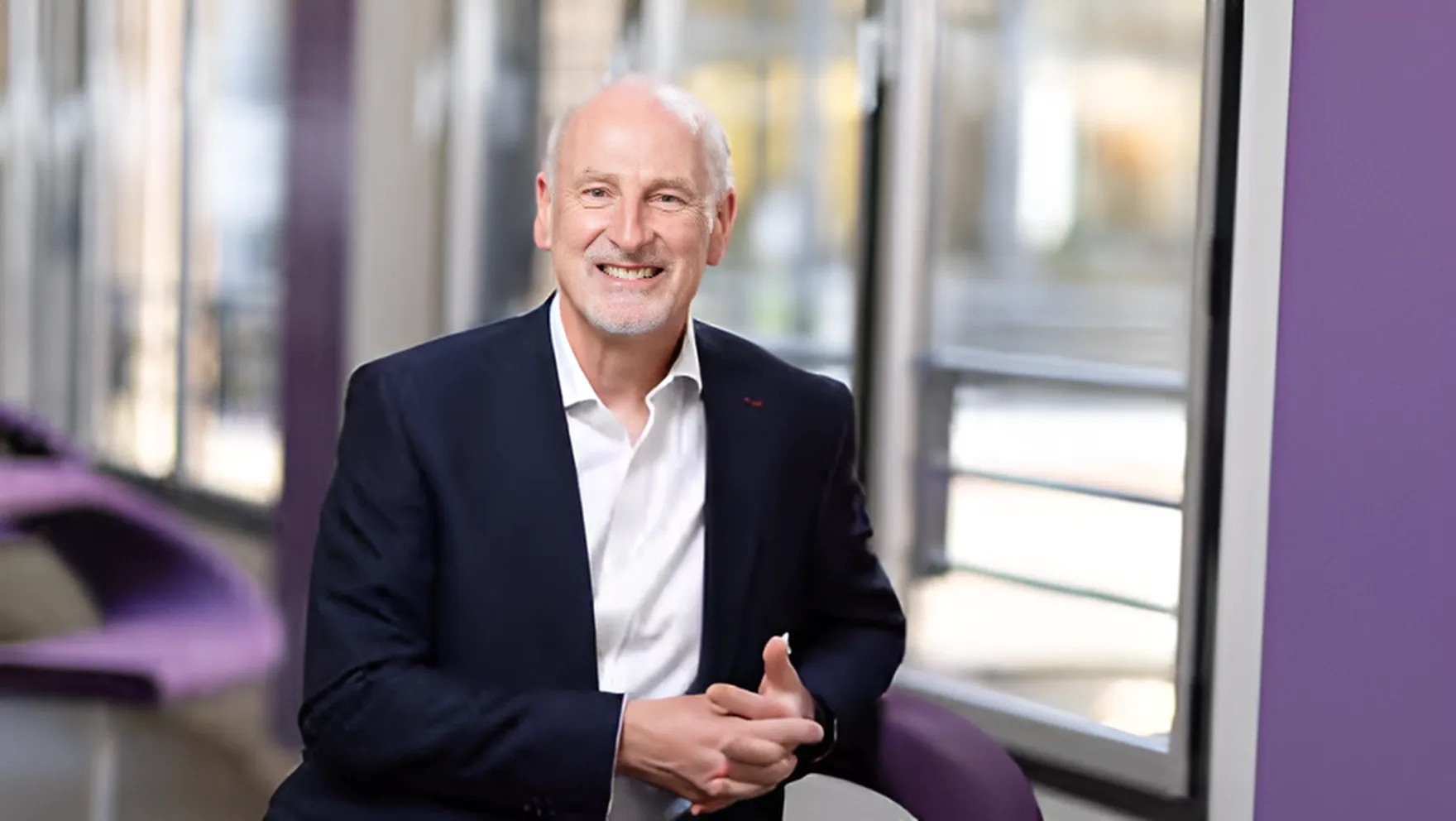Charting a Course to an Innovative Culture Within Your Company
Flashes of insight, strokes of genius, and sudden bolts of inspiration often spring to mind when we envision the practice of delivering game-changing business advancements. But while ideation is a critical component of building an innovative culture, by itself it’s not enough to drive transformative breakthroughs for today’s enterprise, given the speed, scale and level of complexity at which the commercial world now operates. Rather, as Harvard professor Gary P. Pisano notes, modern organizations need to adopt a well-planned innovation strategy: a set of systemized actions, behaviors, policies and procedures that work toward achieving a specific competitive goal and lay the groundwork for ongoing corporate evolution and advancement.
In other words, if you want to achieve breakthrough results in business, it’s not simply enough to “Think different,” as Apple co-founder Steve Jobs famously challenged the world to do. You’ve also got to implement forward-thinking and systemic changes to create an innovative culture and mindset.
And you have to put in place actionable methodologies that can help you proactively disrupt your organization and its core offerings before competitors, unforeseen events or unexpected market shifts invariably force your hand.
An overly myopic focus on delivering today’s most in-demand solutions may come at the expense of your ability to deliver tomorrow’s winners. Focusing purely on short-term gains and failing to set aside the time and resources needed to make long-term investments in your firm’s future in a rapidly changing business world may prove a costlier choice for your organization.
However, risks need to come in the form of smart and cost-effective bets that lay the groundwork for future success. That means institutionalizing formal innovation and R&D processes across your enterprise, encouraging workers to think like intrapreneurs (entrepreneurs within the organization), and committing to a mindset of continuous learning and organizational improvement.
It also means investing in two forms of growth-minded initiatives: Core innovations (the kind that reestablishes the uniqueness or relevancy of your core products and/or solutions) and leap innovations (the kind that delivers transformative breakthroughs).
Planning for Tomorrow
Instituting future-focused mindsets and processes in your organization is critical to laying the groundwork for an innovative culture that leads to game-changing innovation, says Cuong H. Duong, CEO of global microconnector and RFID antenna manufacturing leader Linxens. “For innovation to happen, basic building blocks have to be in place,” he says. “It’s crucial to streamline time-consuming processes and activities that are currently eating up your firm’s schedule to free up more of staffers’ time to concentrate on brainstorming and developing forward-looking advancements and ideas. If you can’t move fast, you can’t innovate.”

experience to the company.
Mr. Duong suggests that one of the first, best investments an enterprise can make is automating routine processes from accounting to data and order entries and customer relationship management (CRM) functions. Offloading time-consuming tasks can free up more time to think about where your industry and organization should be heading rather than just focusing on meeting today’s needs. Mind you, “These systems can take a couple of years to put in place,” Mr. Duong says. “But does it change the game because [your company’s gains] become exponential at some point in time.”
Like many firms, Linxens has been faced with challenges due to the onset of the global pandemic, supply chain disruption and sudden shifts in customer preference, all while growing from 700 to more than 3,200 employees. But by making a point of decentralizing operations and decision-making processes as it grew, Linxens has been able to become faster and nimbler about responding to rapid changes in the marketplace.
Equally important, Mr. Duong says, is driving an organization-wide innovative culture, in which innovation and creativity are valued at the highest executive level. “Innovation is nothing more or less than people being more at ease with brainstorming and generating ideas and trying something new,” Mr. Duong says.
Under Mr. Duong, Linxens has laid the groundwork for future innovations in myriad ways. The company has moved away from a linear process of research and development to a model that focuses on running multiple pilot projects in parallel, using these test programs to grow capabilities, boost insights, quickly source partner/market feedback, and adapt its business strategies.
The company moves fast and fails fast, exploring different opportunities, market tactics and ways of thinking on a regular basis. “This gets you in the mood where no matter what happens in the market, you’re already more agile and proactive and less mentally fragile,” says Mr. Duong.
“For innovation to happen, basic building blocks have to be in place. It’s crucial to streamline time-consuming processes and activities that are currently eating up your firm’s schedule to free up more of staffers’ time to concentrate on brainstorming and developing forward-looking advancements and ideas.” —Cuong H. Duong, CEO, Linxens
It has shifted internal communications efforts from a system of town halls to one of fireside chats in which employees can ask questions, get direct face time with Mr. Duong, and make their voices and suggestions heard. And it has built closer relationships with customers, partners and suppliers to stay attuned to emerging trends and shifts in consumer sentiment, so it can develop forward-looking solutions more quickly and cost-effectively.
As it develops these solutions, it focuses on smaller, faster projects that deliver iterative changes in strategy rather than costly, large-scale developments that can take so long to craft and deploy that they’re outdated by the time they arrive.
“Our model for the past two years has been ‘faster, further, stronger,’” says Mr. Duong. “It’s not that we need to be number one—just be better than we were yesterday. And by having this mindset where you constantly focus on self-improvement, it helps you be more [adaptable] and agile. Innovation itself is largely a byproduct of people who are willing to do a little bit more, give a little bit more and be a little bit more creative.”
Shifting Strategic Direction
Today competition can come from anywhere. Operating environments and customer tastes can shift faster than ever. That’s especially relevant for category leaders like global multinational food, snack and beverage giant PepsiCo, a mainstay of store shelves since 1898.
In the wake of rising consumer interest in green and sustainable business practices, PepsiCo has begun investing heavily in sustainability and ESG-driven efforts, says Ron Khan, global vice president of packaging for PepsiCo Beverages. Its initiatives focus on driving change in three areas: reducing the amount of plastic the company uses by leveraging new “lightweighting” technologies; minimizing the need for single-use plastics; investing in infrastructure upgrades and advanced technologies that support greater recycling opportunities; and reinventing packaging solutions to benefit customers, the planet and its partners.
“We’re striving to build a more circular, inclusive and sustainable supply chain,” Mr. Khan says. As one example, all Pepsi-branded drinks in North America are expected to move to 100% recycled plastic (rPET) bottles by 2030. The company has also partnered in developing recyclable paper bottles and plastics derived from plant-based sources.
Responding to fast-moving changes in the industry landscape and consumer preference requires the company to put a premium on investing in research and development efforts that drive transformation and accelerate business growth.

“Our team is consistently exploring and tracking how consumers’ everyday experiences and preferences are changing,” Mr. Khan says. “Advances in digitization, AI and data are also key drivers in how we respond to a fast-moving environment and deliver game-changing innovations.” For instance, PepsiCo uses digital simulation technologies to model new business efforts and initiatives, and to simulate how dozens of variables might enable or inhibit new efforts and their speed to market.
Breakthrough innovations such as PepsiCo’s new advancements in packaging don’t just happen in a vacuum. The company actively seeks to collaborate with a broad range of partners, customers and nonprofit organizations up and down the supply chain to identify new areas for growth and development, as well as innovative solutions.
Similarly, the company leverages data mining and analytics solutions to keep up with shifts in customer preference and sentiment and to look for clever and creative ways to apply both new and preexisting resources to address these needs.
“To be successful, our teams must have a flexible and agile mindset to drive change and adapt quickly,” Mr. Khan says.
“Our team is consistently exploring and tracking
how consumers’ everyday experiences and preferences are changing. Advances in digitization, AI and data are also key drivers in how we respond to a fast-moving environment and deliver game-changing innovations.”—Ron Khan, global vice president of packaging, PepsiCo
Finding Success Amid Uncertainty
Corporate leaders must focus on concepts such as incentivization if they want to fuel a consistent innovative culture. In tomorrow’s business world, growth and success won’t just be about envisioning great ideas, but also about empowering, rewarding and recognizing others for applying more elements of creativity and entrepreneurship throughout their work. In effect, promoting successful change in your enterprise starts less with research, more with rewards.
For leaders, this means having to craft and put in place systems and processes that encourage working professionals to regularly reconsider their approaches, recalibrate perspectives and step outside of their comfort zones. Risk-takers must be actively rewarded for having the guts to build things where they see voids in the marketplace, and for challenging the status quo. This means working to give employees more platforms and opportunities to connect, share ideas, and pilot new program and service trials, learning from each successive effort.
In essence, this equates to promoting leadership at every level of the business, giving employees latitude to think like entrepreneurs and giving them the tools and platforms that they need to share information and execute in changing environments.
“Decentralized companies operate and innovate much faster than those operating using top-down decision-making systems,” says Linxens’ Mr. Duong. “But for decentralized teams to work, you need to give people a clear vision of where they’re headed strategically, and where you want them to go. What they do during the day, that’s their business. It’s your job to give them direction and feedback along the way.”
Giving employees more runway and room to work creatively, and championing a corporate innovative culture that’s willing to think several steps ahead, learn from mistakes, and constantly readjust and adapt its strategies, can help you be more successful. The bottom line: Delivering breakthrough innovation becomes far simpler when you’ve structured your enterprise to be a powerhouse of imaginative thinking.
“While [companies] must remain agile and reactive, ultimately whatever we do must be rooted in vision and strategy,” says PepsiCo’s Mr. Khan. “This brings purpose to the work we do. With purpose established and through the use of data, knowledge and insights, we can develop the right program of short-term opportunities [to pursue] as well as longer-term game-changing innovations.”
Instilling Innovative Culture
Creating an innovative culture doesn’t have to be expensive or complicated. Here are some time-tested solutions employed by Fortune 500 leaders to spark game-changing innovation and creativity.
- Running Shark Tank-style entrepreneurship contests in which employees are invited to submit novel and innovative concepts
- Hosting “hackathon” events that challenge staffers to develop product prototypes or solutions in less than 48 hours
- Creating open innovation portals where employees can suggest creative ideas, and where companies can source ideas from startups, universities and the general public
- Building innovation labs whose staffers aren’t held to the deadlines and demands of the rest of the organization
- Forming expert and advisory committees tasked with exploring emerging topics and trends
- Routinely inviting junior staffers and new hires to sit down at breakfast or lunch meetings and share their ideas for innovative new strategies and solutions with senior leaders
- Pairing employees with partners from different backgrounds and experience levels and switching partnerships regularly to expose them to fresh tactical approaches and ways of doing business
- Launching new product or service prototypes for $20,000 or less every six weeks running, all year round, learning from each effort and adapting future solutions in turn as they go
- Hosting internal conferences, webinars and educational salons on rising topics of interest
- Inviting customers and industry thought leaders to share thoughts on new trends, disruptions and innovations at panels, work-shops and fireside chats
This article appeared in the Summer 2022 issue of Insigniam Quarterly with the headline “Charting a Course to a Culture of Innovation.” To begin receiving IQ, go here.



